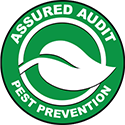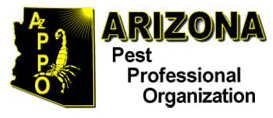Occasional Invaders
Cankerworm
| Appearance |
|---|
 Cankerworms are sometimes called "inchworms," but note that there are many other species of inchworms. Cankerworms have feet only at the front and rear, and they move by arching their rear portion. Appearing in the spring and fall, cankerworms are the larvae of adult moths. Cankerworms are sometimes called "inchworms," but note that there are many other species of inchworms. Cankerworms have feet only at the front and rear, and they move by arching their rear portion. Appearing in the spring and fall, cankerworms are the larvae of adult moths. |
| Habitat |
| Cankerworms usually inhabit broad-leaved trees and shrubs, including apple, ash, beech, birch, boxelder, elm, hickory, linden, maple, and oak. Oak and elm are the most commonly attacked. |
| Diet |
| Cankerworms feed on the leaves of trees and shrubs for about five weeks during the summer. |
| Control |
| Residual insecticides applied to tree trunks and branches will kill the larvae when they emerge from eggs. Physical control by placing sticky bands around tree trunks is also an effective method. |









